Comic. 2020.
Collaborator: Thomas Huang
Distinction, Harvard Graduate School of Design seminar, “Marvellous Architecture and the Hallucination of Reason” 2020
Instructor: Éric Lapierre
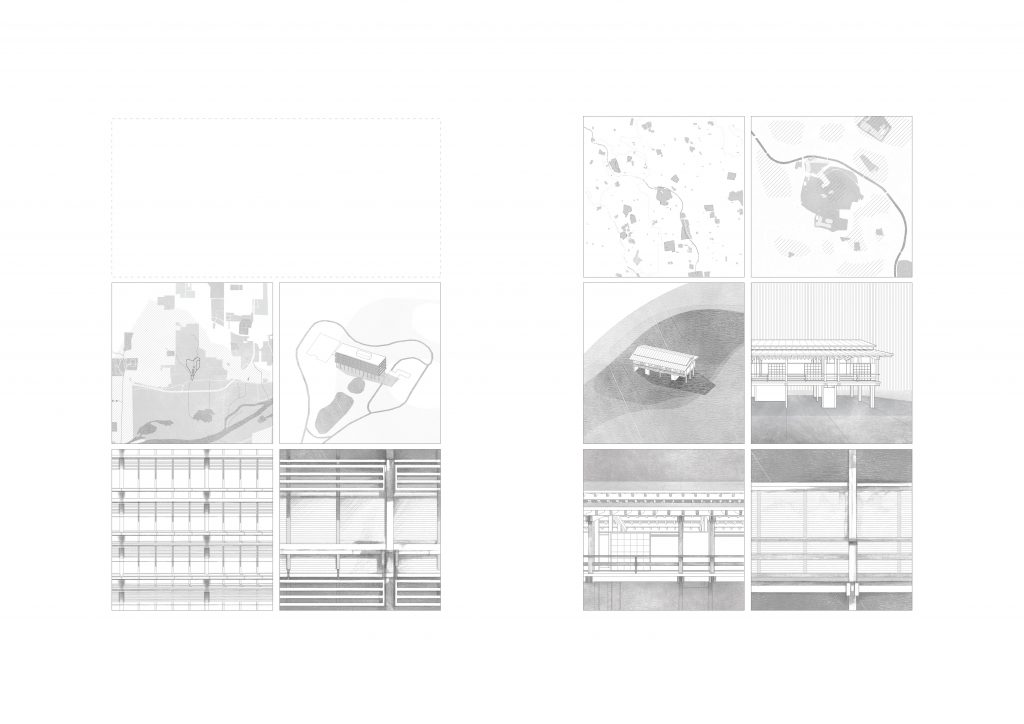
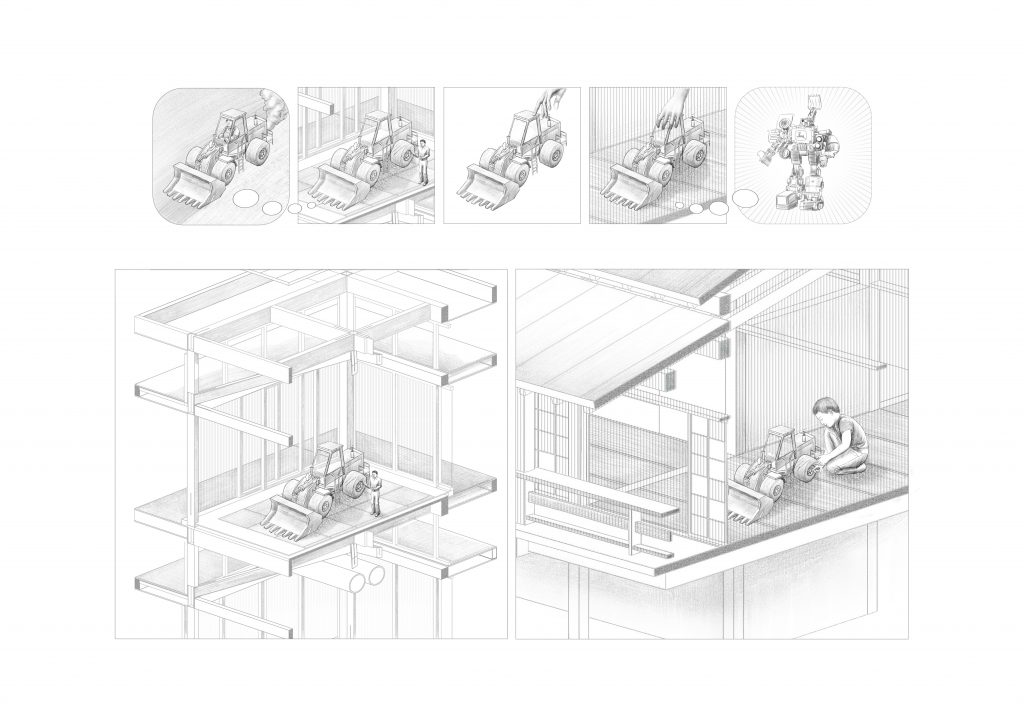
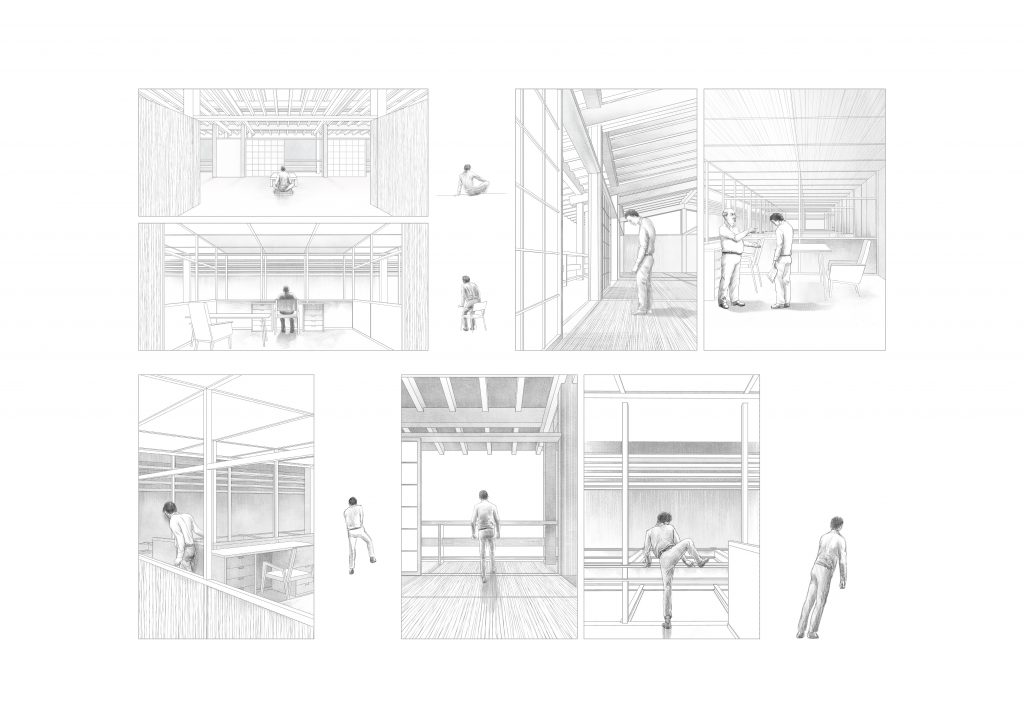
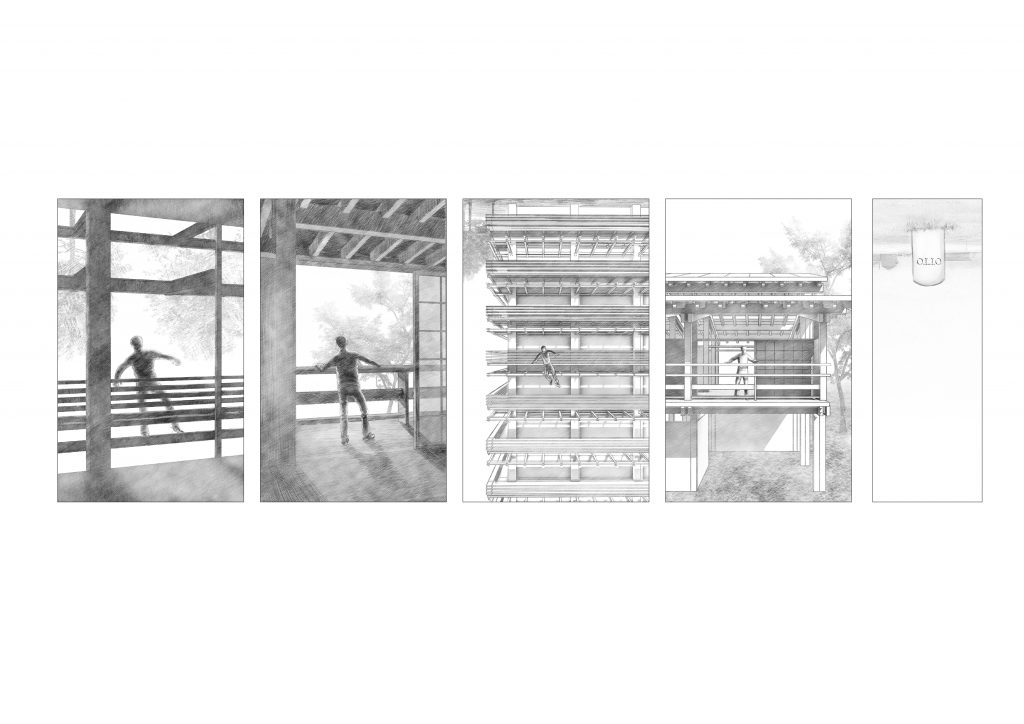
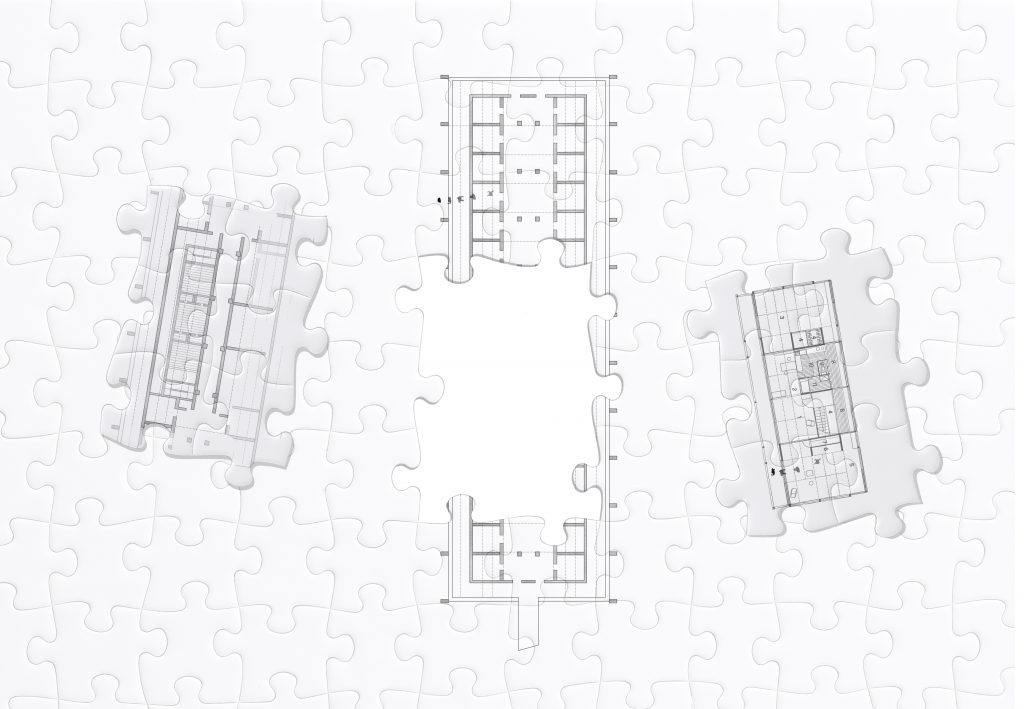
The Paradoxical Double Life of Otto, Explained
The storyline will converge between two stories of two split versions alluding to the same person, Otto, an ordinary office worker in John Deere Headquarters (JD HQ) and his double Otto, a housekeeper in Tange House. The frames alternate between vignettes of routines of the two parallel worlds, but appear as a continuous story. The frames of one parallel world are interspersed in the frames of the other parallel world with subtle indications of their misalignments.
There is a special connection between the buildings in which the story takes place, John Deere Headquarters by Eero Saarinen and Tange House by Kenzo Tange. Technically, these two buildings have nothing alike, they are different in program, scale, material and nationality. Yet, there are certain paradoxes in both buildings that at the time makes them seem so familiar to one another, almost with a sense of dejavu.
The paradoxical nature of JD HQ lies in its material and scale.
The method of construction of JDHQ is almost identical to that of the now demolished Tange House, but it is actually corten steel, and it looks like a scaled up wooden building. So ultimately, we are interested in the interchangeability of experience, proportion, and materiality in these two buildings, this interchangeability, on the other hand, is strongly juxtaposed by their tremendous difference in scale. And we try to communicate this contrast in every type of drawing that we produce.
JD HQ has an exhibition room where its distinctive tractors are displayed. The tractor usually acting as a scale indicator- an object and an auxiliary to a building. However, we will personify this tractor and place them as our protagonist in various scenarios, with the building or landscape instead acting as an auxiliary for them.
Tange House is now demolished and emotionally replaced by a wood model replica of one third its original scale. The fate of this house adds to the paradoxical nature in that its final scale jump lands itself in the place of an object instead of an architecture.
The storyline will converge between two stories of two split versions alluding the same person, Otto, an ordinary office worker in John Deere HQ and his double Otto, a housekeeper in Tange House. The frames alternate between vignettes of routines of the two parallel worlds, but appear as a continuous story.

With an aerial zoom-in, from satellite maps to the building to the facade, and eventually to the joint, the story unfolds in giving the audience a geographical context of the two parallel worlds. When the view is finally framed at the joint, you see the amazing paradoxical similarities between the two buildings – one high-rise and one small house – they share astonishingly similar joint structures. This is because in both buildings, the members extend past each other. On a deeper layer, the different numbers of frames in each side indicates that, assuming the zooming rate is constant, fewer frames suggest that the scale of the architecture is bigger.

We have an axonometric comparison between the constructions of two buildings, expressing their constructional similarity and difference in scale, but at the same time, a tractor acts as a constant element in both drawings, although the relative scale and position of this object remains the same, you realize that on the left, it is a real tractor but on the right, it is a toy.
A deeper layer of this drawing is that we’ve made the object a protagonist, by showing what tractor could be thinking if it was alive. As the retired tractor in JD reminisces about his past glory in the field, the toy tractor in Tange House indulges in heroic imagination that he is a transformer.
In this scene, the strategy of narrative gives the illusion that the tractor remains one and a unity, while the background shows drastic change in scale and thus changes the identity of the tractor from an agricultural machine, to a museum object, and finally to a toy.

Otto the ordinary office worker, who appeared beside the tractor in the previous scene, is now scolded fiercely by his boss. A chronic depression patient, Otto finally gives it up and thinks about going to an alternative world to end his pains. As he moves close to the uninhabitable balcony railings of JDHQ, the parallel Otto, the housekeeper idles around in a sun-lit Tange House, and walks out to the engawa.

As the story proceeds, the frame alternates between Otto the JD worker and Otto the Tange House housekeeper. On the most evident layer, it is the story of Otto who jumps off a building and commits suicide.
On a deeper layer, the frames of Otto the JD worker are all upside-down while the frames of Otto the housekeeper are oriented normally. This way of narration is inspired by the horizontal members of JDHQ being near the ceiling while the horizontal members of Tange House are the railings of the second floor balcony. When JDHQ as an environment is flipped, the horizontal members align in position with those of Tange House, creating an eerie parallel as the reader notices that the trees outside are upside-down, and then notices the horrible fact that Otto is falling in air, head down. The silhouettes in the first two frames especially illuminate this eerie parallel.
The story culminates in his tombstone, with engravings: Otto, his name, a palindrome, which reads the same backwards.

The final page is a playful take on what should have been a rather technical drawing of plans. The way we are comparing the two plans is by placing them on a continuous sheet of puzzles.
The scenario depicts a choice that the viewer will subconsciously have to make to complete the puzzle- the choice between the missing part of the headquarter, or as an alternative, the plan of tange house
The point is to show that both buildings base their proportion on a similar rigorous grid. In terms of the relative location of the serview core and the relationship between exterior and interior, the two plans are incredibly similar. But on the other hand, the entirety of the tange house conceptually only makes up a small portion of the headquarter. And we …
This page is placed last because in a way, the plan is where everything is honestly revealed.
Essay co-written by the comic authors.
______________________________________________________________________________
Yiou’s remarks:
I am always primarily interested in storytelling. I am interested in narrating the story of an occupant of a building instead of a descriptive story of the building itself. Rather than directly depicting the buildings, the comics narrate a story of a person’s life, a life that can only happen in the unique spatial conditions of the buildings. I am exploring a way of narration that uses the methodology and thinking of architecture, to present people’s stories, instead of the other way around.
This comic project incorporates some of my longtime thoughts about he fraudulence of medium. In the fourth scene of the jump, the first, third, and fifth frames are oriented upside-down. By this way, the scene as a whole conveys the same posture in a continuous manner – of a standing man. Its initial inspiration is a playful take on the architectural elements of horizontal bracings that can be aligned by flipping the view. But the Reality is perceived in the way that it is framed. Framing and medium do not only ‘represent’ reality. Framing ambiguates reality. Medium creates reality.